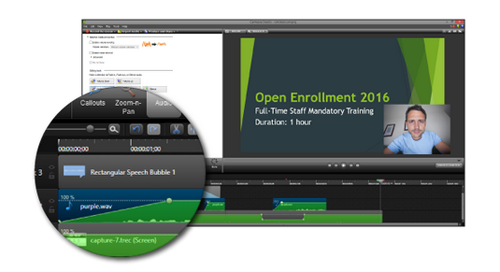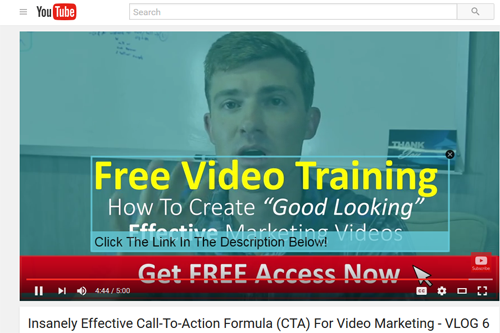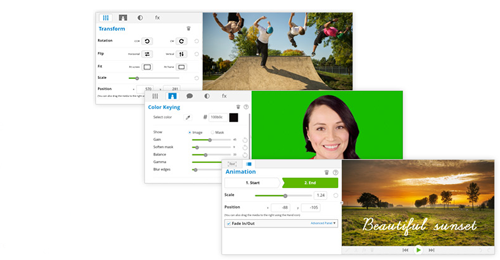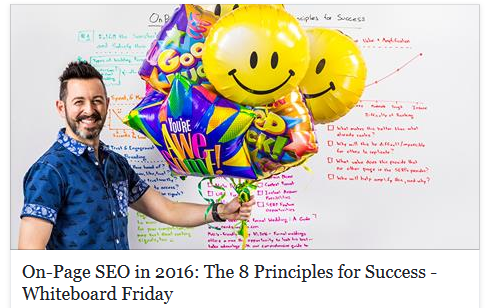Add Videos to Your Website in 6 Easy Steps

Video is a powerful medium that instantly personalizes your content and stimulates your viewers visually and emotionally. Part of what makes video so powerful is the fact that it is underutilized on most websites.
A website with a high-quality, engaging video will capture visitors and increase conversions. Furthermore, you can add it to a video platform such as YouTube or Vimeo and gain more traffic to your website. But how should you even begin? This guide breaks it down. Here's how to film, edit and promote a spectacular video for your website.
1. Do your research.
If your competitors are making videos for their websites and blogs, you need to know. Pop on over to YouTube and research some of your niche keywords. Take down notes: What format are your competitors using? Are these videos comedic or serious?

How many views do the videos have? Are they high-quality, professional-grade or obviously made by an amateur? This will help you brainstorm for your own video and make some decisions down the road about whether or not to outsource your videography and editing.
2. Choose a video-friendly format.
Deciding on a format will help you narrow down a topic for your video.
One of the most popular video formats is storytelling. This gives you the opportunity to narrate an experience, which adds to the personal appeal of a video. Also, if the narrative audio can stand alone, you can turn it into a podcast and you get a bonus piece of content for promotion.
Another excellent format for a video is a review. This allows your audience to see the product and gives you an opportunity to physically identify specific elements of a product while talking about it.
A third and very popular format for video content is instructional how-to's. Use your skills to demonstrate something new to your audience. If you are instructing your audience in something done online, a screen capture tool like Snagit or Camtasia can be very useful.

There are a number of other formats that would work for video - be creative. The primary goal is to ensure that your content is visually engaging, not a single-shot lecture.
3. Decide on a CTA.
No piece of content is complete without a call to action (CTA). Videos are no exception. Think of this as a specific assignment for your viewers. What do you want them to do once they have seen your video? Often, it is one of two things: subscribe to your email list or visit your website.
If you're looking to expand your email list, be sure to include your email opt-in form at the end of your video. If you want more traffic throughout your website, direct the viewers to a piece of your content that directly relates to the video. For example, if you did an instructional video about calligraphy, send them to a product review of your favorite calligraphy pens.
The purpose of your video doesn't have to be the same every time. But you always need to be verbally specific with the CTA: "I hope you liked the video. If so, take a look at this new piece of content about [topic] by clicking the link below."

Now that you have a format and purpose for your video, it's time for the fun part: Recording!
4. Lights, camera, action!
Now is the time to use the research you did in step 1. How tough is the competition? If you were impressed with the quality and popularity of videos in your industry, you should consider hiring a videographer.
If this isn't a feasible reality for you, there are other options. Cell phone camera technology is remarkable and can be used to film high-quality video that is website-ready. Webcams work well for product reviews but can also be used for any other format of video. A simple digital camera can also work wonders these days.
Take your time. Filming a video - especially your first one - isn't a quick and easy task, but don't let yourself get bogged down in tiny details. Practice makes perfect.
No time to do this yourself? Stock footage is an option, but a risky one, because the footage is often bad resolution. This can often be rectified with a little humor. Check out Dissolve.com, Shutterstock, Getty Images or Adobe Stock for stock footage.

If you don't have a microphone to record audio, you can use subtitles (this works especially well if you're taking a comedic approach). Your video needs at least some sound, though - get online and find some royalty free background tunes to complement the footage.
5. Polish, polish, polish.
Once you have some raw footage to work with, it's time to put it all together and make your video look clean and appealing. This requires some help, either from a professional video editor or a professional piece of software. Consider this an investment. If you see more video content in your future, spend good money on software such as Adobe Premier Pro. Again, patience is key: You won't learn to work with this in a day. If you want a simpler, less expensive option, try YouTube's Video Editor or WeVideo.

6. So, now I just upload, right?
Wrong.
Now that you have put all this effort into your stellar video, it would be a travesty to just post it and hope people see it. Ensure your video has the most impact by sharing it on your social media accounts (like Moz does on its Facebook page) and promoting it on forums.

When sharing your video on social media, also pay attention to the authorities in your industry. Engage in the discussions on their social media pages and post your video if you think it will be helpful (but don't be spammy).
Conclusion
Adding video to your content strategy can diversify your outreach and gain more followers for your business. Like any technique, it's important that you take the time and effort necessary to improve your skills. Follow these steps and test out various video strategies to see what works best for you and your company.

Subscribe to Our Newsletter!
Latest in Software









